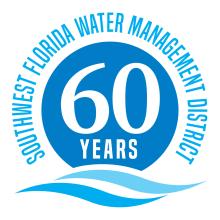For the past 60 years, the District has worked to protect water resources and ensure the public’s water needs are met. But as Florida’s population continues to grow, it will take careful planning and innovative new ideas to ensure the state’s water supply.
An estimated 1,000 people move to Florida each day, and Florida will need an additional one billion gallons per day by 2040. The water supply is not endless, so legislators passed the Clean Waterways Act in 2020, which gives state agencies the authority to address water quality and water supply issues. That includes increased exploration of potable reuse as an alternative water supply.

Potable reuse is highly treated recycled water that can be used for drinking, cooking and bathing. And right now, several utilities across the state are implementing pilot projects to see how potable could help supplement future water supplies.
Another group focused on meeting water demands is the Central Florida Water Initiative (CFWI). This group is made up of government agencies, utilities and other stakeholders looking for ways to meet water needs without causing harm to water resources.
The CFWI planning area covers five central Florida counties including Polk, an area with high growth and high demand for water. The group uses a regional planning approach for water supply to provide consistent regulations and strategies to secure the area’s water future.
In addition to a focus on regional water supply planning and alternative water supplies, the District continues to emphasize conservation through a variety of programs. For example, the Water Incentives Supporting Efficiency (WISE) Program provides reimbursements for certain water conservation projects.
Also, the Florida Water Star℠ program is a voluntary certification program for new residential and commercial construction and existing home renovation. The program encourages water efficiency in appliances, plumbing fixtures, irrigation systems and landscapes, as well as water quality benefits from best management practices in landscapes.
Through these initiatives and others, the District will continue its mission to meet water needs for today and the decades to come.
